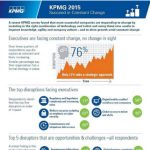Employee feedback, compliance, government forms, leave policies, recruiting: the list of tasks that an HR professional have to perform is nearly endless. Just as important as any one task is how professionals put them all together into a united front. Welcome to the Strategic HR topic.
It’s a given that HR professionals are actively involved in many areas of an organization, but where exactly? A recent BLR® survey looks at how HR plays a role in strategic business planning and other key strategic areas.
To start off the week in the Training Daily Advisor, we present tips on building a better workplace in an article adapted from Why Should Anyone Work Here? What It Takes to Create an Authentic Organization (Harvard Business Review Press, November 2015) by Rob Goffee and Gareth Jones.
By Holly K. Jones, J.D. The AMC original series Hell on Wheels chronicles the construction of the nation’s First Transcontinental Railroad.
By investing in the right mix of technology and talent, global companies can turn business and market challenges—called “disruptors”—into competitive differentiation, according to a survey of more than 600 global senior executives by KPMG LLP, the U.S. audit, tax, and advisory firm. Results from the survey, “Succeed in Constant Change,” indicate top-performing companies are able […]
While salary increase budgets remain flat despite a growing economy, a new study by Mercer found that promotional increases are on the rise as employers focus on career progression to retain and engage critical talent.
The period between Thanksgiving and New Year’s is full of joy and celebration. But from stress and germs to distraction and overindulgence, it’s also fraught with hazards that can leave your employees ill, injured, or dispirited.
With leadership development a top talent management priority this year, a recent study found that many employers plan to increase their investment in this area. In fact, 54% of employers surveyed by Lee Hecht Harrison expect to increase spending on leadership development in 2015, followed by 41% maintaining the same level of spending, and 5% […]










